The sea cliffs of Scotland are never still ! Wind, tide, and wing are in constant motion, and in summer the Hebrides, Shetland, and Orkney transform into great amphitheatres of life. On a recent journey through these northern isles, my ZEISS SFL 10×40 binoculars were never far — a steady companion wherever I went that brought me closer to the seabird dramas unfolding along the coast.
Puffins at Lunga: An Intimate Theatre
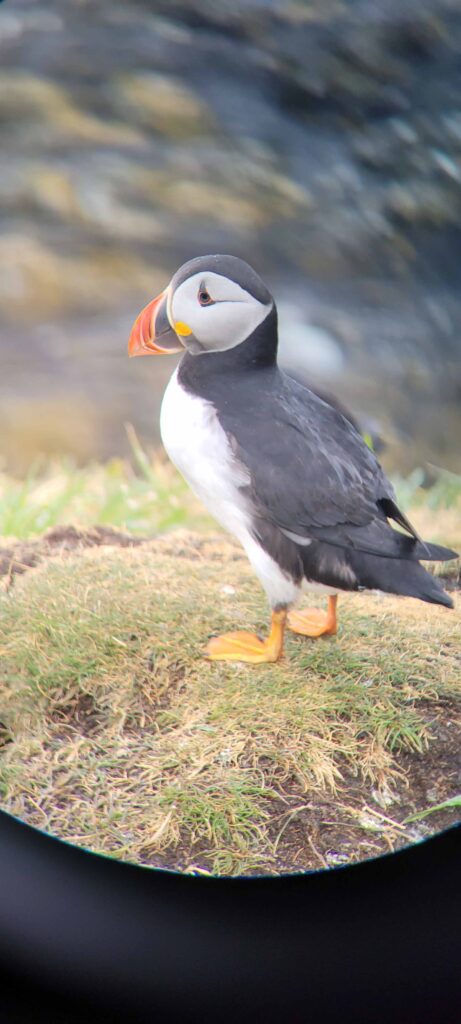
The Isle of Lunga, part of the Treshnish Isles off Mull, is where the Atlantic puffin plays both star and comedian ! Landing there by zodiac meant slippery rocks and a climb up grassy slopes pocked with burrows—like Swiss cheese riddled with holes. At the end of May, pairs stood guard at each entrance, turning the hillside into a patchwork of tiny territories.
The SFLs, slung lightly around my neck, brought the colony into intimate proximity. Puffins are famously tolerant of human presence, and one can watch them at close range with the naked eye. Yet the binoculars revealed subtler details invisible otherwise.
At ten times magnification, their extraorinarily coloured beaks—striped in orange, yellow, and slate— stood out vividly through the lenses. What struck me was not just colour, but clarity. Every feather line, every bead of saltwater clinging to plumage, stood out in sharp relief against the gentle blur of the grass-covered slopes.
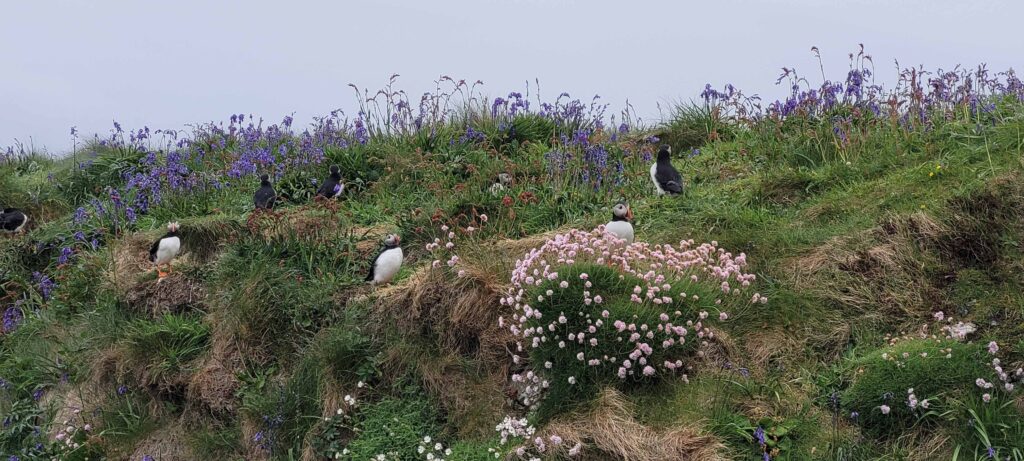
Observing with such sharpness transformed the colony from a comic crowd into a society of individuals, each carrying out tasks with quiet precision.
Speaking of tasks, few are as fundamental as the work of excavation. Puffins are equipped with a single curved hind claw arched like a tiny sickle great for scraping soil and digging their burrows. Seen at close range, the digging looks almost dog-like: rapid strokes of the feet, bursts of soil flying, carving tunnels that may reach a metre into the slope to the nursery. Such labour is the hidden architecture of the colony, and the binoculars helped reveal it with clarity.
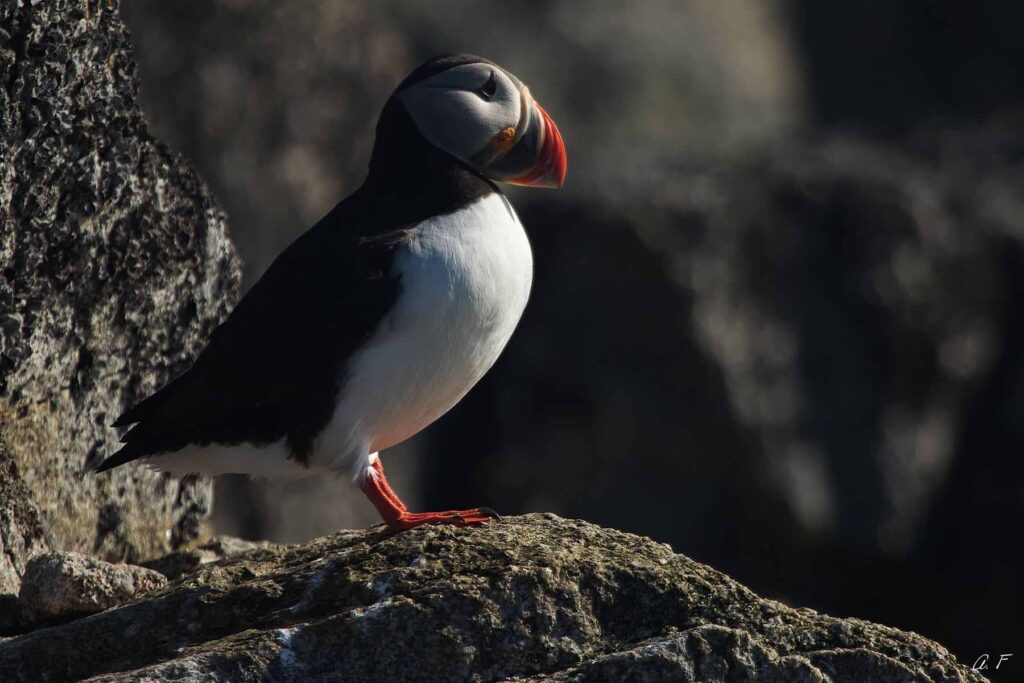
Gannets at Hermaness: The Architecture of Air
If Lunga is playful, Hermaness on Unst was all scale and wildness ! Rain stung our faces as we watched from the ship’s decks, wind tearing across sea and cliff. Even through the weather, the gannet colony was unmistakable—tens of thousands circling in pale gyres, their cries rising above the crashing sea.
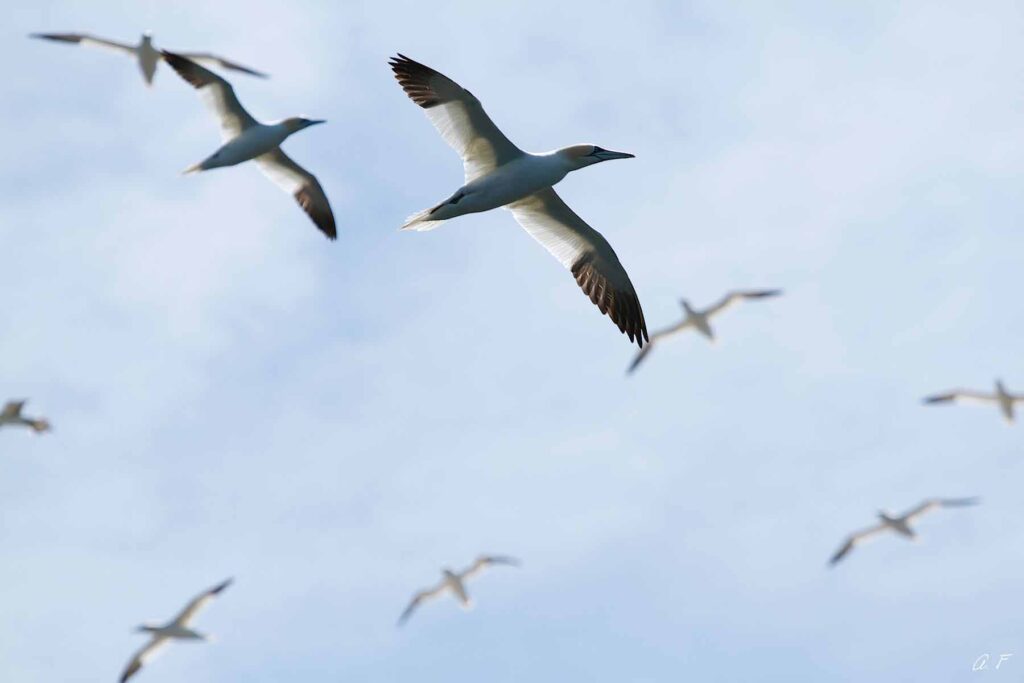
Northern gannets are the largest seabirds in the North Atlantic, their wings nearly two metres across. Through the 10×40 lenses, I could follow every one of their dives: wings folding into an arrow, the pause before impact, the column of spray. To the naked eye it was a blur; magnified, it became a sequence, almost cinematic ! The light weight of the SFLs mattered here. Even in Hermaness’s relentless wind, steadiness was possible, allowing the colony’s vast choreography to be watched without strain.
Oystercatchers at Mousa: Feeding at the Broch
From immensity back to intimacy. On Mousa, a small island in Shetland, rises the best-preserved Iron Age broch. Around its ancient stones, oystercatchers tend their chicks in the summer grass.
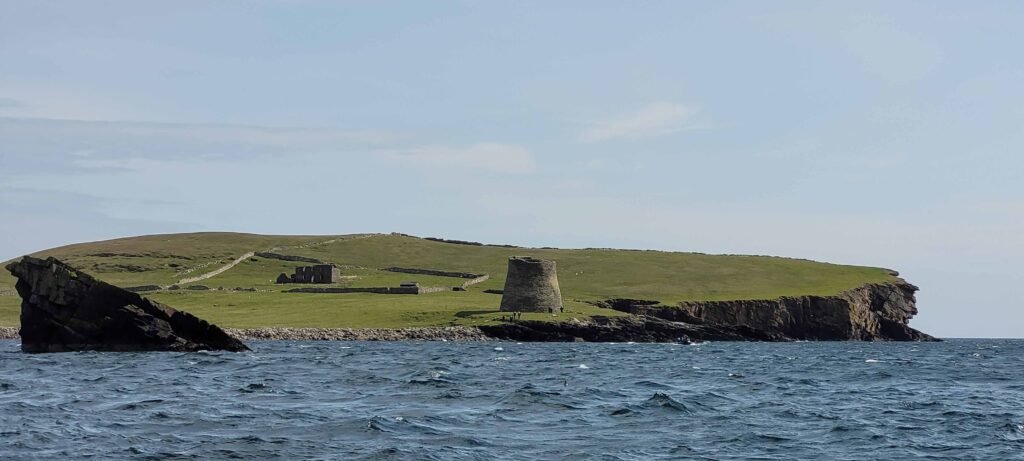
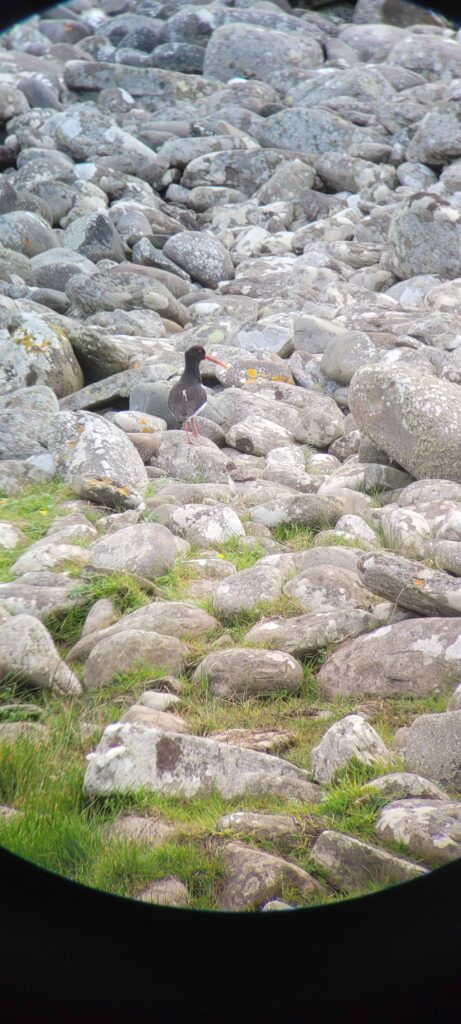
At first glance, these birds are familiar. But through the binoculars I saw richness in the ordinary: a black-backed parent probing for marine worms, dashing to its mottled chick, passing food with quick precision. The faint quiver of wings as the chick begged, the wary scanning of the adult as gulls circled—details invisible without optics !
Here, the binoculars were not just tools of vision but of respect : they allowed me to keep my distance, leaving the birds undisturbed while still experiencing their intimacy.
Scottish fieldwork tests both patience and gear. Weather shifts abruptly; salt spray and bog water conspire against equipment. The Zeiss SFL 10×40s endured it all. Their wide field of view made tracking swift gannets easier, while close focus let me study flowers and insects ashore. Across Lunga, Hermaness, and Mousa, the binoculars did not create the spectacles, but they allowed me to see them fully.
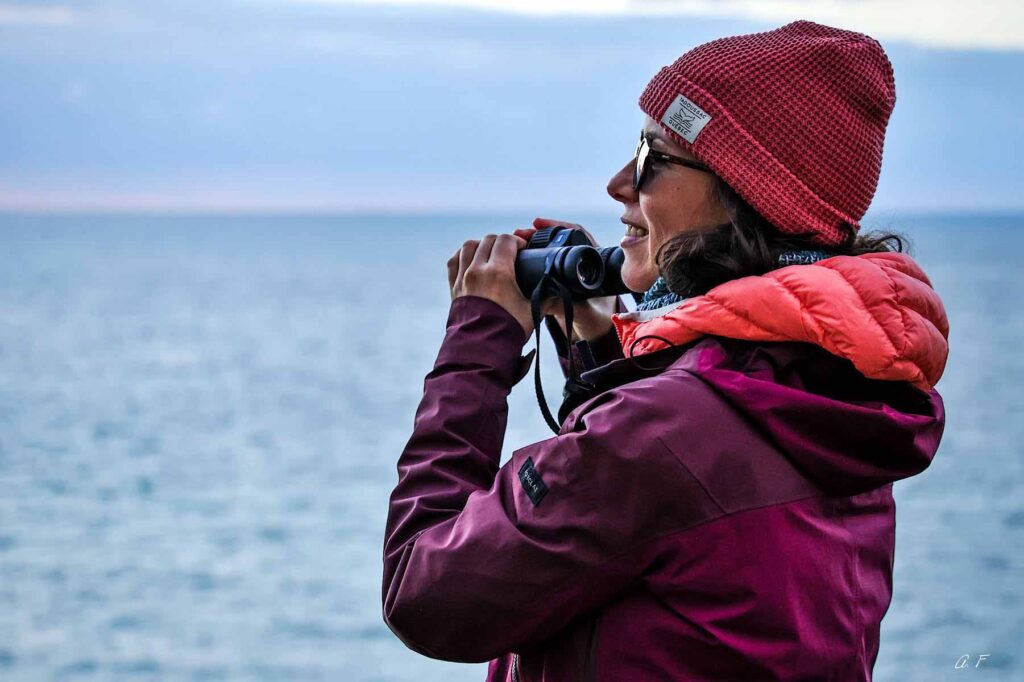
For me as a naturalist, that lingering clarity is perhaps the greatest gift: the sense that wild encounters, however fleeting, can remain sharp in memory—focused, alive, enduring !